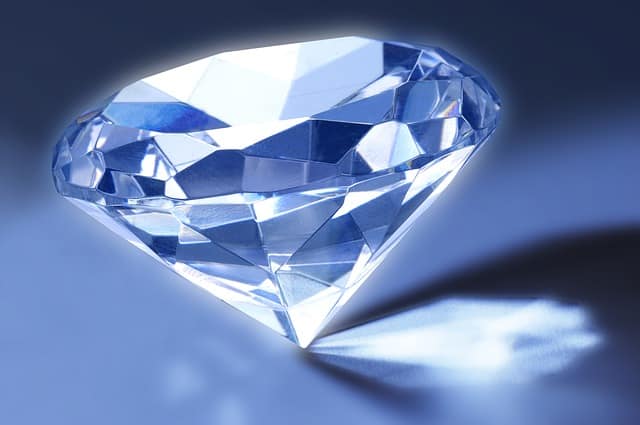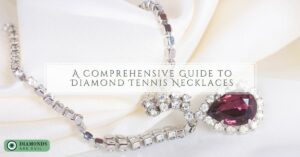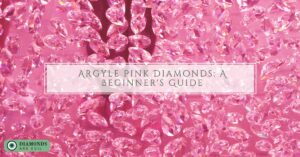Diamond purchase is a great financial investment that expresses a deep emotional desire. So, there is nothing more disappointing than discovering one bright morning that the diamond purchased isn’t the real deal. Countless fakes, imitations and zircons roll out there, blurring the unprofessional eye’s ability to discern between a real diamond and a fake diamond. In the following article we will teach you how to identify a synthetic diamond and what to keep in mind when buying.
Just before: What is a synthetic diamond?
Let’s start by saying that synthetic diamond is a completely wrong term, aimed at laboratory diamonds. Synthetic materials in general are materials designed to mimic the appearance or behavior of other material (usually of higher quality), though they have different characteristics and properties in the end. When it comes to laboratory diamonds, the production technique simulates all the natural conditions of crystallization of the natural diamond and gives the product completely identical physical and chemical properties. Hence, laboratory diamonds are not synthetic or artificial in any case and are indeed considered to be real diamonds – especially prestigious and shiny.
What are the benefits of the synthetic diamond (lab diamond)?
Although the initial tendency is to continue to prefer the natural diamond over the lab’s diamonds, there are far-reaching benefits to the groundbreaking lab-producing diamond technology that now allow many consumers to fulfill their dream of a diamond without compromising important costs and values.
First, because of the savings created by the crystallization of the diamond under laboratory conditions, diamonds can finally reach a much lower consumer price of several thousand compared to tens of thousands in the natural diamond market. Due to strict inspection and compliance, most of the laboratory diamonds are of the highest quality and are thus the rarest diamonds in nature.
In addition, laboratory diamonds do not in any way involve nature itself and do not use human capital from third world countries to mine diamonds and destroy the environment. This benefit allows people with high environmental values, ecological and climate-advocate people to use objects or jewelry that set with lab diamonds wholeheartedly and without fear of damage and destruction behind them.
Here’s how to check if your diamond is original
If it’s too good, it’s not good – imitations and fakes exist in every field, and also at this field. If you are about to buy a diamond for the first time, remember the following rule of thumb: A large, transparent and completely flawless diamond costs tens and even hundreds of thousands. If you look at such a diamond exactly, and promise you these details at a very low price to lure you – it is certainly imitation. Diamonds have rating scales that relate to their cleanliness, color, cut and carat, and the higher your scale values, the higher the price, even if it is a laboratory diamond.
Say hello and thanks to the seller without the certificate – each original diamond production was accompanied by a professional and rigorous expert process and therefore the diamond was created a gemological certificate detailing all its characteristics and values. Most of the natural diamond certificate is only from the GIA, the Gemological Center in the USA. To discourage counterfeiters and make sure you get an original product, you should ask to see the certificate. If there is an evasion or some explanation (even the most logical in the world) that the seller does not have a certificate, the diamond is not real at all. Note that laboratory diamonds are also equipped with a special paper certificate and each certificate has its own number. If you combine the certificate number with the online database and did not receive any result, then the certificate is fake.
Ask for a gemstone assessment from a certified gemologist A qualified professional will be able to assess the flaws or deficiencies of the diamond under magnification and determine whether it is an original or counterfeit stone. People in the diamond field usually say that the perfect diamond looks so beautiful that it looks fake. And again, to avoid a situation where you “get” a perfect diamond at a bargain price, which is apparently fake, ask to have a look. Laboratory diamonds, like the natural ones, may also have defects at some level or another, affecting the quality of the stone and its final price.
Take sandpaper – and gently rub the diamond with it. A real diamond should not be affected at all by the glass, so if it is scratched, you will know immediately that it isn’t real.
They blew on the diamond – since they are manufactured at a very high temperature, laboratory diamonds and diamonds in general are considered excellent heat conductors. If hot steam is formed on them, they will disappear almost immediately. So, if you blow on the diamond and the moisture does not go away immediately, you will know that it is a non-heat conducting counterfeit.
Synthetic diamonds versus moissanites
moissanites is a particularly strong natural mineral, almost resembling its toughness to that of the diamond. Since the two have a number of similar features, the moissanites is often used for cheap imitation as is the case with glass and quartz. The glare of the moissanites even transcends that of the diamond and causes many mistakes among consumers, which also may well pass the exhalation test.
So, when you want to identify whether these are synthetic diamonds (lab diamonds) or moissanites, you can check this with the following data:
The powerful spark of the moissanites makes it reflected. If you look at the top or side of the diamond and recognize that the wigs on the opposite side look double, this is a moissanites.
The shine of the moissanites creates a more colorful and iridescent light scatter than what appears in a real diamond.
The moissanites has a lower density than the diamond.
Both stones – moissanites and diamond polished with different technique and therefore the shape of the stone will be different.
Where to check the source of the diamond?
In general, only the diamond exchange contains a special testing laboratory can detect very thin differences (related to the bonding of atoms within the raw diamond) between synthetic and natural diamond. They have a special identification system that is able to find out in depth the origin of every existing diamond, from laboratory and natural diamonds that are mixed together to find quality imitations that are almost identical to the real thing. Recall that a synthetic diamond is not an imitation of a diamond in any case and is made of its properties in the same way as the natural diamond.
Machines that detecting various types of diamonds operate on the principle that a certain sunrise emitted from the stone can be detected even after turning off the light source.
If the diamond shines after the shutdown, it is a laboratory diamond. If the diamond does not shine after the shutdown, it is a natural diamond. In addition to the main examination, several additional comprehensive tests must be performed. Currently, there is a modern machine that is being developed by the Swiss Gemological Institute, which can unambiguously identify existing differences from just one test and reveal the source of the stone, as well as identify unique responses to each existing stone.







